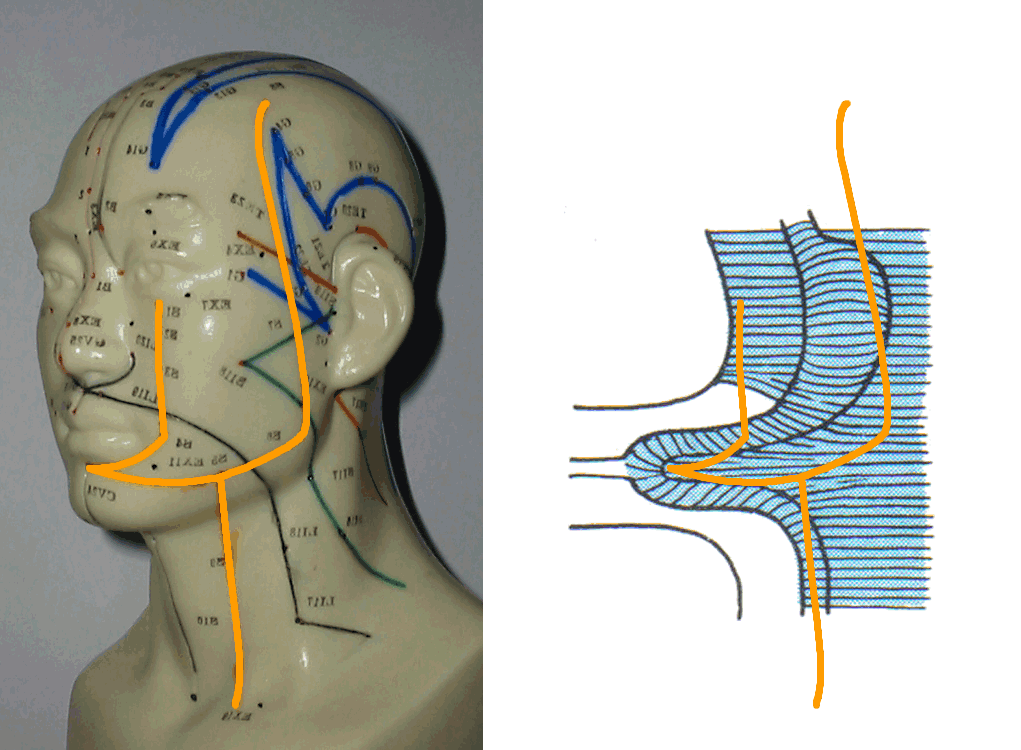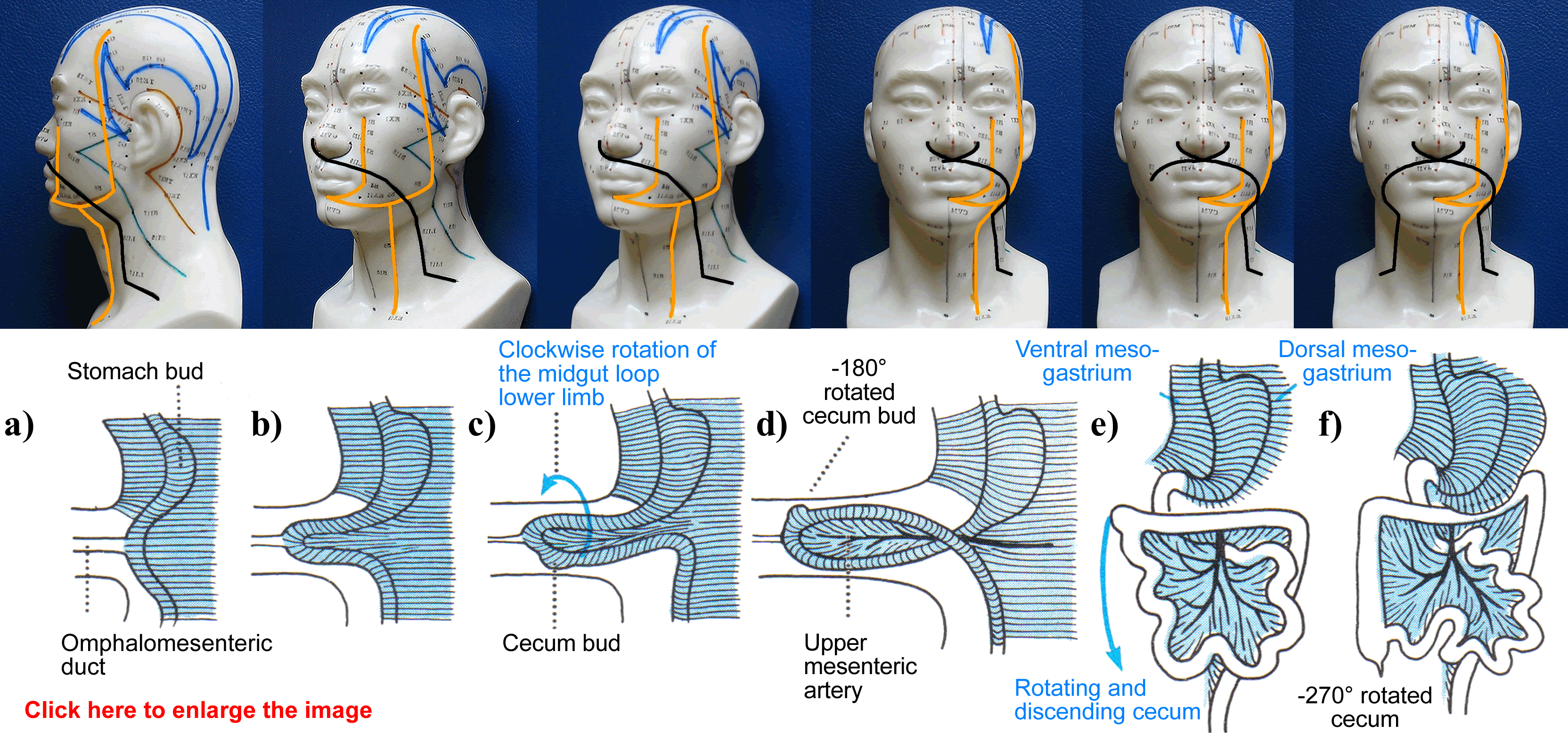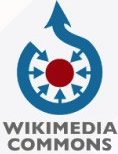| The Stomach
that is
the "Centre"
© 2008-2017 Stefano Marcelli
home/table of contents -
previous -
next
|
|
|
|
:: brown text means unrevised translation or incomplete work ::
NB: the author uses the words "channel", "meridian" and "vessel" as synonyms to define the system of lines, tubes or slices transporting the undemonstrated energy called Qi (pronounce "tchi") to all parts of the body. Anyway he considers "meridian" more suitable for scientific speech and literature, also because it is already employed in other fields of knowledge as in geography and morphogenesis.
|
|
The
Stomach meridian and its corresponding internal organ play a fundamental role in
the traditional Chinese medical physiology.
All organs "turn" around the stomach that is the "Centre". Observing the image below,
the only shape that the stomach meridian pathway (orange) over the face recalls is the
primitive midgut (on the right), when before rotating from the sagittal to coronal
plane, forms a loop that herniates physiologically into the umbilical
chord. We have already seen this special morphogenetic behaviour in the section of the Small Intestine meridian.
What is here of special interest is that, according to Traditional Chinese
Medicine, every organ-meridian of the lower limb is coupled
with the yang-yin equivalent organ-meridian of the upper limb, and vice versa
(see minimal knowledge on the
acupuncture meridian system). The coupled meridian of the stomach is that
of the Large Intestine. Following after each other —Large
Intestine meridian continues as Stomach meridian—
they form the Great Meridian of Tai Yang, running in a continual way along
the upper and lower limb.
|
 |
|
As illustrated in the first strip of figures below,
when we rotate left the head model with the meridians drawn over,
moving it from the lateral to the frontal aspect, we see how the Stomach
meridian (orange) is progressively climbed over by the Large Intestine
meridian (black), the two branches of which cross each other at the
philtrum. This process is very similar to that of the cecum bud c) in
the embryos development, which guiding the 270° counter-clockwise midgut
rotation, crosses and overcomes d) that part of the primitive gut that
later will become jejunum and ileum. The cecum eventually directs
downward e) until to arrive at its anatomical definitive position in the
right iliac fossa f).
|
 |
| | | |
 |
Some images in this site come from the most important resource of free images in the web. Click the logo on the left to visit the site. |
| | |
| |
|
home/table of contents -
previous -
next | |
